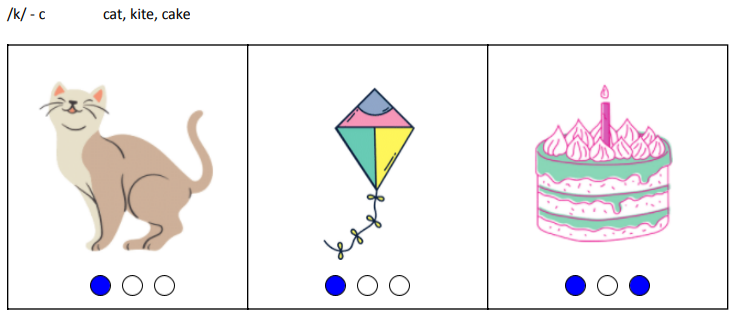You are here
Phonological Awareness Resources
Understanding Consonant and Vowel Phonemes in English
Having a basic understanding of the production and characteristics of consonant and vowel phonemes in English is essential in effective reading instruction. This document walks through the place, manner, and characteristics of English phonemes. This document can be used in tandem with the below Consonant and Vowel charts.
Consonant and Vowel Charts
The consonant and vowel charts organize the sound of the English language by place of articulation, manner of articulation and phonation. This document can be used with the above Understanding Consonant and Vowel Phonemes in English resource to help make sense of English phonemes.
Phoneme Similarities and Differences in the Spanish and English Languages (Updated January 2025)
This document discusses phoneme similarities and differences in Spanish and English. Consonant and vowel charts provide a visual of the shared and language-specific phonemes.
Basic Phonograms Chart
The Phonograms Chart is a free interactive resource provided by Logic of English. The chart includes 75 basic phonograms that hold the key to unlocking hundreds of thousands of words. The chart includes audio and video features to ensure correct production of phonemes as well as an opportunity to see how the sound is produced in the mouth.
The Development of Phonological Skills
This article includes the continuum of phonological awareness skills from basic to advanced, typically ages within the progression, and some sample tasks for each skill.
Phonemic Awareness Instructional Activities from UFLI
Phonemic awareness, or the ability to notice and manipulate individual sounds in spoken language, is an essential building block for later decoding skills. The included activities are designed to promote the development of various phonemic awareness skills. Tutorials, sample lessons, and scripts are available.
Teaching Early Literacy Skills When Masking in Schools
This document created by the CDE Literacy Team provides suggestions for the explicit teaching of phoneme/grapheme correspondences when masking in required in a school. A sample of an explicit lesson is provided.
Phoneme/Grapheme Support Cards
These are provided as a supplement to the “Teaching Early Literacy Skills Through Pandemic Precautions” document. A corresponding grapheme card is shared with all of the consonant phonemes and for introduction of short and long vowel phonemes.
Phoneme Articulation Cards
These additional resources created by the CDE Literacy Team support teachers with explicit instruction of phoneme articulation and explicit teaching of phoneme/grapheme correspondences following the suggestions in the guide linked above.
Teaching Schwa
Schwa is the most common vowel sound in the English language and can be spelled with any of the vowel letters. In English, the vowel in an unstressed or unaccented syllable often reduces to schwa. Vowel reduction and schwa are prominent features of English. This resource covers what schwa is, why it's important to teach, and signs that a student might be struggling with the concept.
Web Link Disclaimer
Because of their potential interest or usefulness to the education community or the general public, the Colorado Department of Education (CDE) occasionally provides links from this site to external websites. It attempts to monitor such links on a regular basis. However, the Department cannot be responsible for the content of any site external to its own.
Further, by linking to other sites, CDE is not endorsing any particular product, practice, service, provider or institution, nor does it necessarily endorse views expressed or facts presented on these sites.
In addition, neither CDE nor any of its employees makes any warranty, express or implied, or assumes any legal liability for the accuracy, completeness, or usefulness of any information linked to from this site.




Connect With Us





